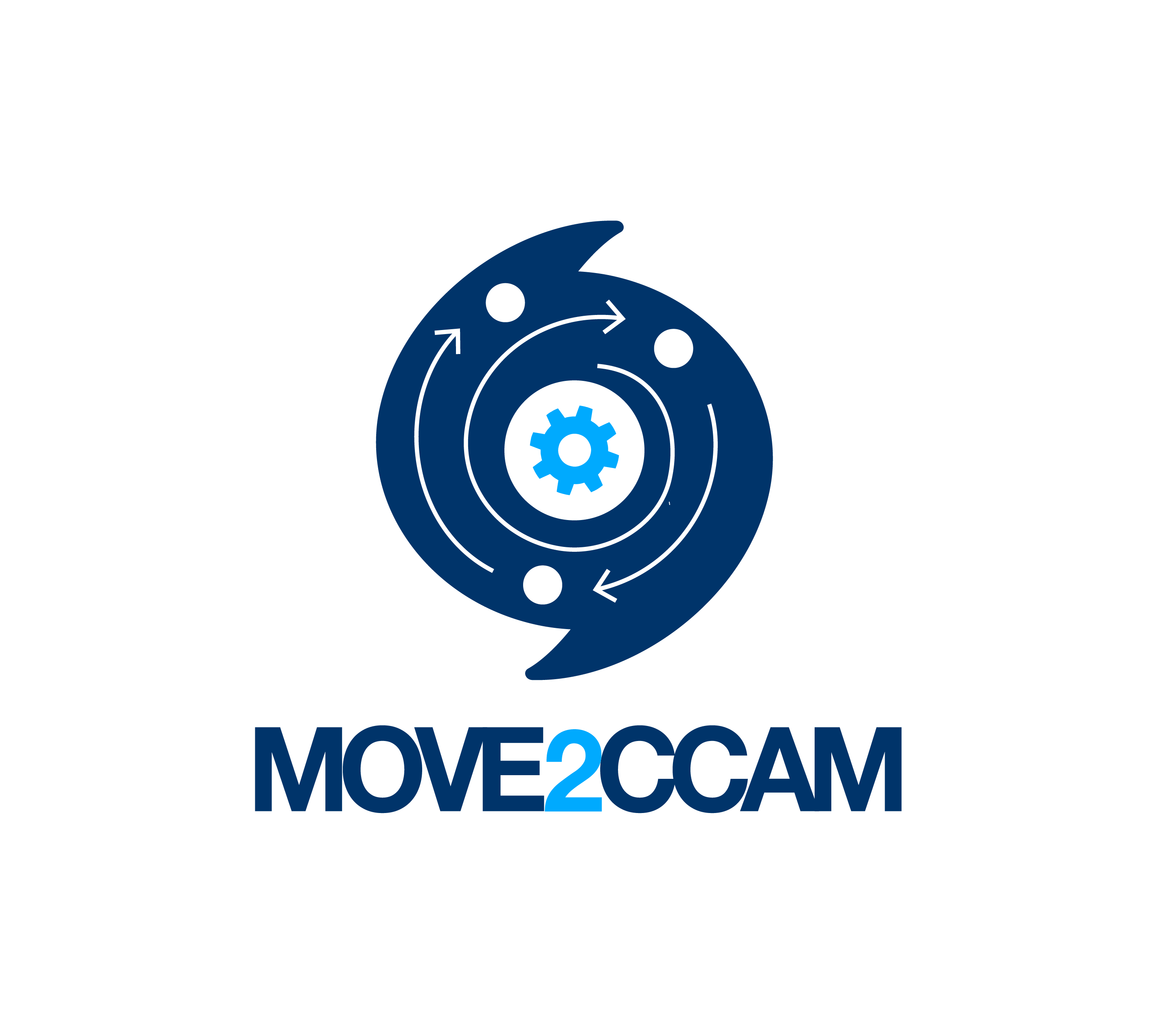MOVE2CCAM aims to develop an assessment tool though Systems Dynamic Modelling (SDM). The tool will enable stakeholders to assess the implications of deploying CCAM solutions for future timeframes (2025, 2030, 2050). The model of the IAMT tool will comprise variables and cause-effect relations, reflecting the attitudes of the Move2CCAM Satellites towards different impact domains across several CCAM use cases. The domains evaluated are mobility, safety, public health, economy, environment, ethics, efficiency of road network and cybersecurity. The impact evaluation within these domains will be done through a set of indicators developed through the project’s activities.
KPIs and Evaluation Process
The project aims to build a Systematic Dynamic Model (SDM) to assess the impact of CCAM (Cooperative, Connected, Automated, and Autonomous Mobility) solutions. To achieve this, an evaluation framework is created, consisting of dimensions, fields, indicators, and boundaries (like city level or CCAM solution type).
The evaluation framework follows four stages:
1. Identification of Aspects: the goal is to recognize which areas are influenced by CCAM solutions and how to evaluate them using indicators. Over 250 indicators were found through an extensive literature review, considering various dimensions such as mobility behaviour and the environment. This stage’s output is a draft version of potential indicators.
2. Definition of Indicators: descriptions of the indicators were organized and aspects such as the indicator’s name, type, calculation method, and associated dimension were detailed. Project partners CARTIF and MOBY then analysed these indicators, selecting those clear and easy to measure, while removing redundant or unclear ones.
3. Data Availability Identification: the project identifies where the data for each indicator can be sourced. An excel file, designed in the prior stage, will help pinpoint data availability for each area and, if feasible, link directly to the raw data source.
4. Validation of Indicators in Co-Creation Activities: participants from different activities will highlight potential impacts and effects of autonomous vehicles. They’re expected to produce a flowchart showing interconnected impacts from chosen CCAM solutions. A separate group will validate these indicators, ensuring they’re suited for the project’s objectives.
During the implementation of the first activities some challenges occurred for the implementation of this framework. The initial plan was to discuss these indicators during co-creation activities 1 and 2. Due to time constraints, this didn’t happen, so the consortium devised the above-mentioned stages as a workaround. This research revealed that indicators sometimes have different names, and calculation methods, or aren’t always clearly defined. Despite these challenges, the project seeks to provide a comprehensive system for assessing the effects of CCAM solutions.
The table 1 shows the project’s identified 90 KPIs, which can measure both current and future scenarios in cities and regions. These indicators also assess the performance of mobility services compared to conventional vehicles. They can be calculated using various metrics, such as per inhabitant, passenger, distance, trip, or vehicle. The finalized list of these indicators, along with their definitions, will determine the approach for the project’s impact assessment, the data required for each indicator, and the data’s availability in the prototype areas.
| Dimension | Field | Indicator |
| Environment | Air quality | Nitrogen oxide emissions |
| Fine particle matter emissions | ||
| Ozone concentration | ||
| Climate Change | Greenhouse gases emissions | |
| Energy Consumption | Energy consumption | |
| Fuel mix | ||
| Renewable energy penetration | ||
| Noise | Noise level | |
| Mobility behaviour | Travel & Transport demand | Distance travelled |
| Daily trips | ||
| Trip length | ||
| Commuting distances to go to work | ||
| Number of planned trips per hour | ||
| Share of trips made during peak hours | ||
| Travel & Transport purpose | ||
| Travel time | Timing of travel | |
| Average trip duration | ||
| Peak period for travelling | ||
| Transport mode | Modal split / Transport mode share | |
| Number of multimodal trips | ||
| Share of children walking or cycling to school | ||
| Public transport use | ||
| Number of users of public transport services | ||
| Number of passengers with concession/subscription tickets in public transport | ||
| Vehicle features | Average age of vehicles | |
| Average vehicle occupancy | ||
| Average vehicle speed | ||
| Four-wheel motorized vehicles | ||
| Two-wheel motorized vehicles | ||
| Number of freight vehicles | ||
| Network efficiency | Network capacity and traffic flow | Travel/transport demand |
| Punctuality of transport services | ||
| Delays in transport system | ||
| Average speed on the road | ||
| Congestion | ||
| Travel time | Timing of travel | |
| Peak hours | ||
| Total journey time | ||
| Wait time | ||
| Connecting time | ||
| Parking search duration | ||
| Accessibility | Public transport stops | |
| Distance between transport modes | ||
| Access to transport services at any time | ||
| ICT extent | Road equipped with a real-time ICT-based system | |
| Traffic alerts at real time | ||
| Land Use | Urban Land | Surface |
| Population density | ||
| Urban compactness | ||
| Pedestrian areas | ||
| Transport space | Space dedicated for motorized vehicles | |
| Space for the circulation of bicycles | ||
| Space for parking | ||
| Length of lines for public transport | ||
| Safety | Collision | Traffic accidents in the road |
| Traffic accidents in the city | ||
| Security | Ciber attacks | |
| Health | Persons affected in traffic accidents | Number of fatalities due to traffic accidents |
| Number of injuries due to traffic accidents | ||
| Access to healthcare | Time required to reach the nearest health centre | |
| Travelling cost to reach the nearest health centre | ||
| Access to services and leisure | Time required to reach the nearest shopping centre/supermarket | |
| Travelling costs to the nearest shopping centre/supermarket | ||
| Time required to reach the nearest library | ||
| Air pollution exposure | Days exceeding critical levels of emissions | |
| Population exposed to air pollution due to transport | ||
| Quality of life | Number of elderly people feeling alone | |
| Time gained (avoided congestion, waiting time avoided, time liberated for use to work, entertainment, etc) | ||
| Equity | Transport accessibility to vulnerable groups | Share of public transport adapted to mobility -impaired groups |
Table 1 List of KPIs identified in MOVE2CCAM activities



